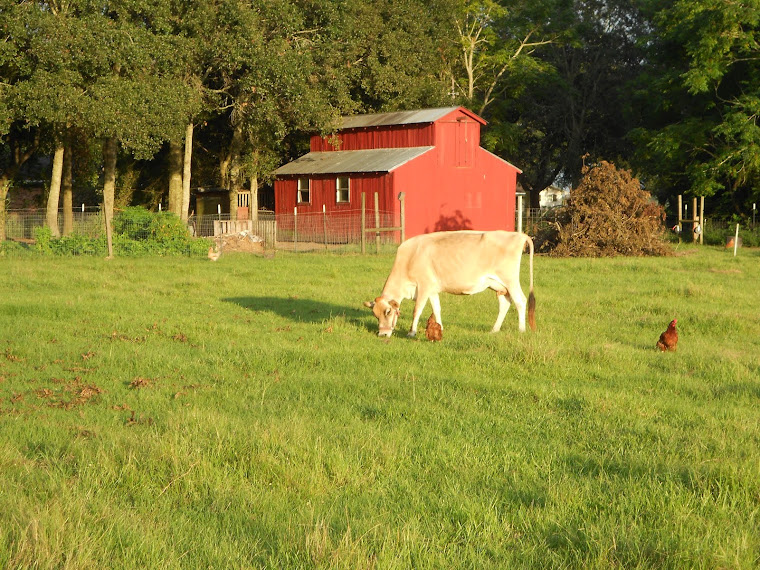Yesterday afternoon a tragic event happened. Tricia called me and told me that Mocha was in respiratory distress. Mocha is a Nubian goat that is spotted all over. She's a really pleasant goat. Some goats are trouble, but Mocha has always had a calm disposition. I ran out to the pasture where she was and she was gasping for air. She fell on the ground, and we worked to see if there was something we could do to help her. Tricia went back to the house for meds and I coaxed her to the barn where we could work on her without all the other animals in the way.
As it turned out, Mocha succumbed to whatever medical issue that suddenly came over her. We were both sad as we always are when we lose an animal. It's not uncommon. We've lost a multitude of chickens, several cows and a number of goats. You try to do your best to raise them in a humane manner, knowing that you gave them a good life, but fully aware that death is part of it.
I went and got the wagon that was to serve as the hearse to bring Mocha to her place of interment. LuLu arrived to pay her respects. I can't say that LuLu and Mocha were friends, but LuLu looked sad to learn of Mocha's passing. As I pulled Mocha off in the wagon, a trail of curious animals followed me to the gate.
At the appointed time, Mocha was lowered into the earth, and I began to shovel dirt over her.
The job was soon done, and I fashioned a crude cross with some oak limbs and some baling twine and decorated it with a camelia bloom.
The Table of Contents showed plenty of information for how to properly conduct funeral proceedings. It gave direction for all manner of funerals - young, old, and many others. Try as I might, I couldn't locate directions on how to perform a Funeral Service for a Goat.
Well, we know why, right? Goats don't have souls. We'll miss Mocha, nonetheless. She was a good animal, and we will miss her around Our Maker's Acres Family Farm.
































